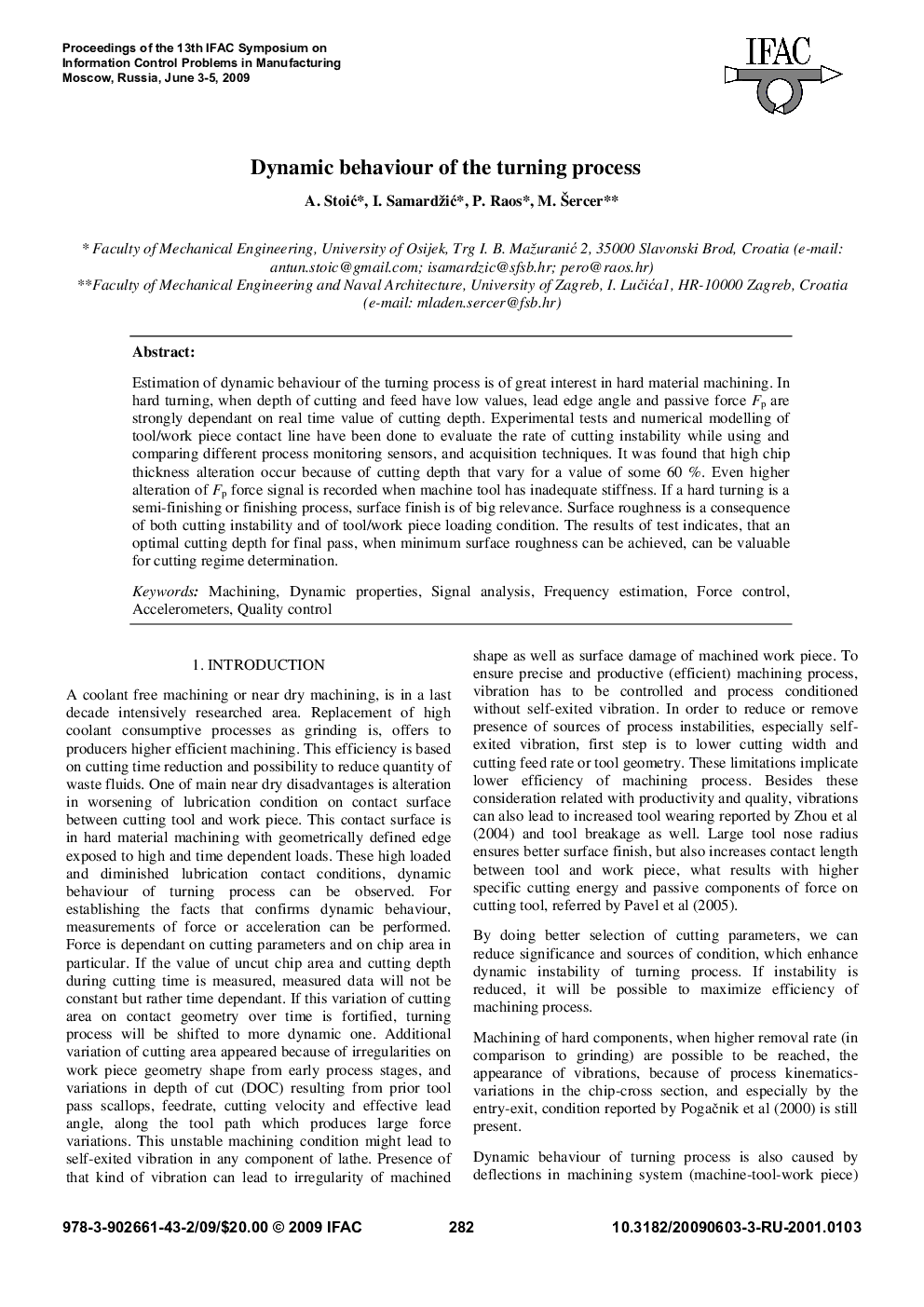| Article ID | Journal | Published Year | Pages | File Type |
|---|---|---|---|---|
| 719371 | IFAC Proceedings Volumes | 2009 | 5 Pages |
Estimation of dynamic behaviour of the turning process is of great interest in hard material machining. In hard turning, when depth of cutting and feed have low values, lead edge angle and passive force Fp are strongly dependant on real time value of cutting depth. Experimental tests and numerical modelling of tool/work piece contact line have been done to evaluate the rate of cutting instability while using and comparing different process monitoring sensors, and acquisition techniques. It was found that high chip thickness alteration occur because of cutting depth that vary for a value of some 60 %. Even higher alteration of Fp force signal is recorded when machine tool has inadequate stiffness. If a hard turning is a semi-finishing or finishing process, surface finish is of big relevance. Surface roughness is a consequence of both cutting instability and of tool/work piece loading condition. The results of test indicates, that an optimal cutting depth for final pass, when minimum surface roughness can be achieved, can be valuable for cutting regime determination.
